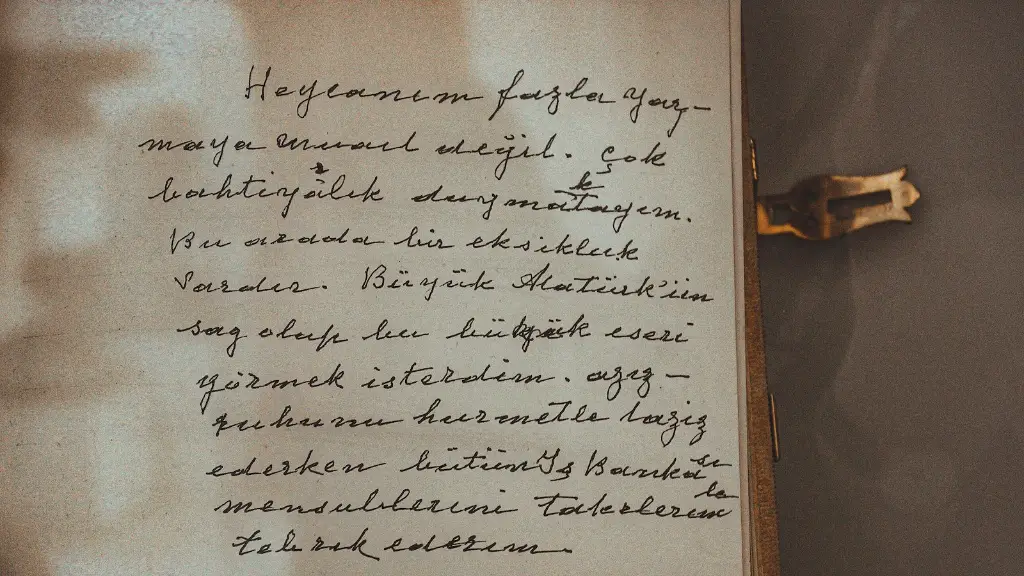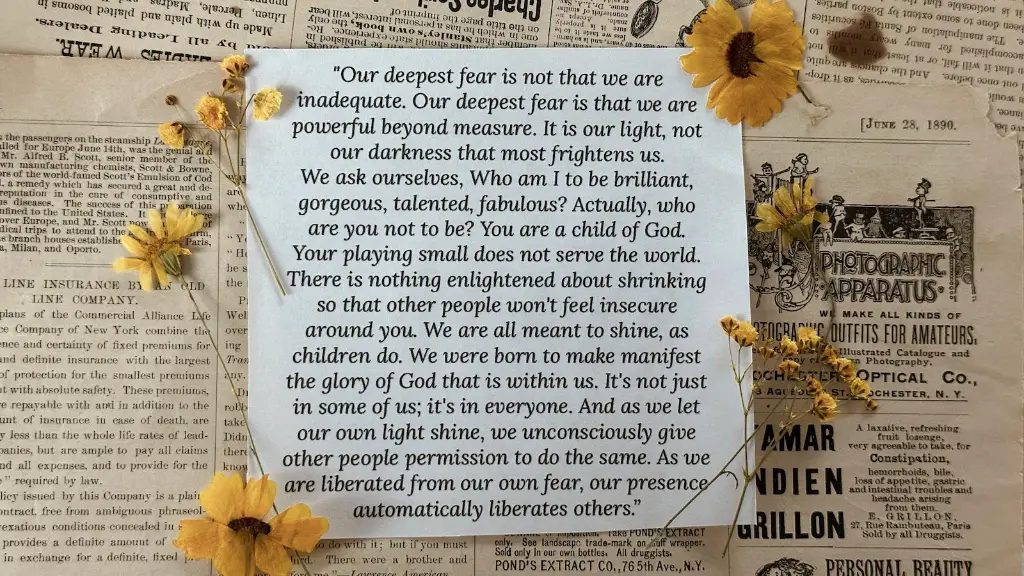Aristotle’s Definition of Poetry
Aristotle’s concept of poetry involved an examination into the beauty, order, and structure of language, rather than a focus on the plot or meaning of a particular piece. The ancient Greek philosopher believed that different elements of art should be evaluated solely on their technical merit rather than their content. He viewed poetry as an use of language to create an emotional response from the audience, rather than just imparting information.
Aristotle argued that poetry should be judged by how faithfully it imitates reality, as this could create a larger emotional connection with the audience. He believed that the best poems would embody a unity of language, form, and story. Regardless of the genre, Aristotle argued that each poem should only include elements that furthered the story, with any extraneous details stripped away.
Aristotle further argued that the emotional impact of a poem stems from the structure of its language. For the philosopher, the beauty of poetic language was found in its balance, proportion, and cadence. He believed that poets should strive to create an environment of suspense and tension through the use of sound and other linguistic elements, as this could lead to heightened emotional involvements.
Although Aristotle’s definition of poetry is often considered outdated, it still holds relevance within modern society. His focus on the technical aspects of poetry allows authors to examine their writing from a different perspective and to craft pieces that elicit strong emotions from the audience.
Emotional Aspects of Poetry
Emotion plays an essential role in poetry, as it can be used to evoke a response from the audience. Aristotle wrote about the power of emotion when it comes to poetic language. He argued that an author could use description and other rhetorical devices to create an emotional atmosphere in which a poem takes place. This can involve the manipulation of language to create a certain feeling in the audience.
Word order, literary devices, and imagery are all tools that can be used to create emotion. Aristotle argued that the most powerful emotion that poetry can elicit is pity. He believed that pity could be invoked by describing a tragic circumstance and creating sympathy for the protagonist of the story. This, in turn, could lead to an examination of the character’s situation and spark a discussion about the nature of human suffering.
The use of hyperbole and rhetoric is another tool that authors can use to create emotion. Aristotle argued that, by exagerrating the impact of a particular event or situation, the author could elicit a strong reaction from the audience. For example, a poem could be written to emphasize a character’s loneliness in order to evoke feelings of pity or empathy in the audience.
The use of emotion can be coupled with the structure of a poem in order to create an even stronger response. Literary devices such as rhythm, rhyme, and repetition can be used to emphasize the emotion of a piece and create an atmosphere of suspense and tension.
The Dramatic Element of Poetry
For Aristotle, poetry is a form of drama. This involves the use of characters, plot, and setting to create an experience for the audience. According to Aristotle, a poem should strive for a unifying theme or purpose, as this could create a lasting impact on the reader. The characters and plot should be used to explore the theme and build tension until a climax is reached.
Aristotle also argued that a poem should have a structure and order to it. This could involve the use of certain literary devices and techniques to create a certain rhythm or cadence. This could help the reader understand and appreciate the poem more deeply, as they could become immersed within the story itself.
The end of the poem should provide a resolution of the conflict and return the reader to the world they inhabit. Aristotle argued that the use of a unifying theme and an ordered structure could create an overall feeling of unity within the story. This could be achieved by utilizing metaphors, symbolization, and other literary devices.
Aristotle’s concept of poetry as drama provides an insightful approach to the craft of writing. Authors can think of their works in terms of the story they are telling and the characters they are creating. This can help them craft pieces that are emotionally resonant and engaging for the audience.
The Power Of Imagery In Poetry
Imagery is a powerful tool that authors can use to create beautiful and evocative poems. Aristotle argued that the use of vivid descriptions and imagery can help the reader experience the poem in a more visceral way. He argued that visual and auditory elements can be used to create a deeper emotional response.
The art of poetic language involves the use of rhythm and sound as well as the more traditional visual elements. Aristotle argued that the use of sound could be used to create an emotional environment in which the plot takes place. This could involve the repetition of certain words or phrases in order to create a certain tone.
In addition to visual elements, Aristotle wrote about the power of metaphors to create powerful images in the reader’s mind. He argued that the authors should strive to create a lasting impression in the audience by using evocative language. This could involve the use of symbolism and allegory in order to convey deeper meaning to the story.
Aristotle argued that poetry should strive to achieve a balance between form and content. For the philosopher, the use of imagery was an essential tool in this endeavor. By utilizing strong visual and auditory elements, authors could create works that resonated with the audience on a deeper emotional level.
Poetry and the Natural World
Aristotle argued that poetry should imitate life and strive towards an accurate depiction of reality. This could involve the use of nature imagery in order to create a vivid and realistic backdrop for the story. The use of nature can be used to evoke an emotional response from the audience, as it can create a sense of awe or dread.
Aristotle wrote about the power of nature to evoke emotion in the audience. He argued that descriptions of the natural world can be used to create a feeling in the reader. This could involve the use of imagery such as storms, forests, and mountains. The audience could be made to feel as though they are standing in the middle of a raging sea or atop a mountain.
The use of symbolism and personification can also be used to create an engaging environment for the story to take place in. By using symbols to represent larger concepts such as love, death, or loss, the author can evoke a stronger emotion in the audience. Personification can also be used to breath life into abstract concepts, creating a more vivid image in the reader’s mind.
For Aristotle, poetry should strive to create an accurate portrayal of reality. By using elements from the natural world, authors can create a sense of realism that can be both beautiful and evocative. This could help the audience connect with the story on a deeper level, as they could feel as though they are part of the environment that is being described.
The Role of Language In Poetry
For Aristotle, language is the foundation of poetry and all other forms of art. He argued that an author’s use of language should strive towards accuracy, precision, and clarity. This could involve the use of simple yet evocative language that could create vivid mental images in the mind of the reader.
Aristotle emphasized the need for an author to understand their audience and the language that they use. He argued that authors should strive to create works that are accessible to the common reader and that employ language that is easy to understand and relate to. This could involve the use of colloquialisms and common idioms in order to make the story more relatable for the reader.
In addition to clarity, Aristotle argued that the language used in a poem should strive towards beauty. Authors can use literary devices and techniques to craft a piece of work that is not only engaging but also visually stunning. This could involve the use of subtle rhyme or rhythm, as well as the manipulation of language to create an emotional response.
Language is a powerful tool that authors can use to create beautiful and emotionally resonant works of art. Aristotle believed that the use of language could be used to create an atmosphere in which the characters and plot take place. By understanding the power of language, authors can create pieces that are not only engaging but also emotionally impactful.
Conclusion of Aristotle’s Definition of Poetry
Aristotle’s definition of poetry is still relevant in modern society and can provide writers with insight into how they can craft meaningful and engaging works of art. His focus on elements such as emotion, structure, and language can help authors create pieces that are not only technically sound but also emotionally resonant.
The use of imagery, symbolism, and metaphor can be used to create an engaging environment for a story to take place in. Authors can also use sound and rhythm to create an atmosphere of suspense that could lead to heightened emotional involvement in the piece as well. By understanding Aristotle’s concept of poetry, authors can create beautiful and emotionally meaningful works of art.





